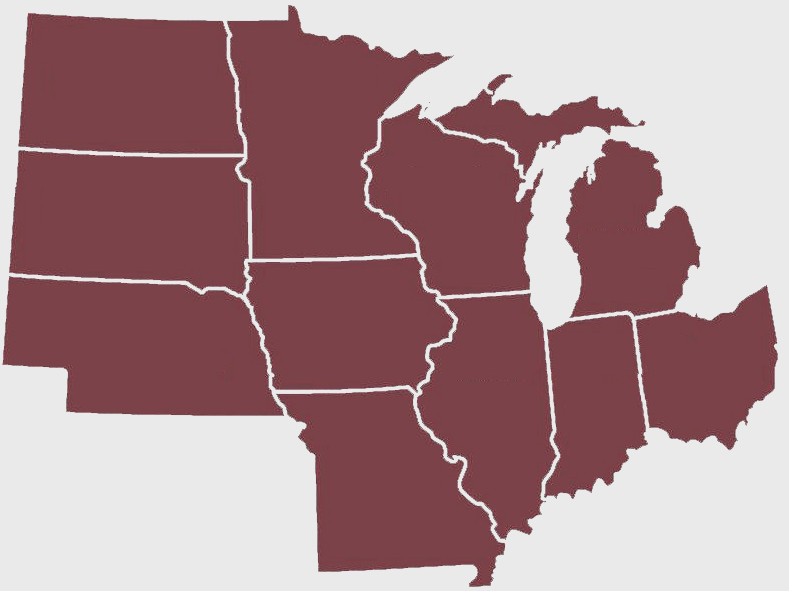
Well in advance of planting day, set aside some time to think about all of the steps involved with a native restoration project. The time you take to plan your project in advance may help to avoid frustrating, time consuming problems later.
CLARIFY YOUR GOALS
Determine why you’re planting native species and the purpose you want your native restoration to serve. Consider w hat you want your native restoration to look like in 5, 10, or even 50 years.
Keep these goals in mind throughout the entire planning process.
SET YOUR BUDGET
Native plants take less time and money to maintain than a traditional lawn in the long run, but they usually require a significant investment up front. Setting a budget will help to determine what project size and scope you can tackle. If you’re running into economic or time constraints, consider starting with a smaller area or with fewer species. You can always increase the size of your planting or add additional species over the next several years.
CONDUCT A SITE ASSESSMENT
Learn as much about your site as possible. This will help to determine which native species are best suited for the project.
- Is the soil sandy, silt, clay, or loam? Sandy soils are dry and don’t hold water, silty soils have more intermediate drainage, and clay soils retain water and become sticky when wet. Loam soil is a combination of multiple soil types.
- How well does the site drain water? You can get a good idea of how well the site drains by looking for areas that dry out quickly or hold standing water after a heavy rain.
- Is the site sloped and if so, what direction does the slope face? Typically, north facing slopes are wet and cool, west and south facing slopes are dry and hot, and east facing slopes have a more moderate temperature and moisture level.
- How much sun does the site get? Most prairie plants need at least half a day of sun to thrive. If the site is shady, plan to plant savanna or woodland species.
- What is currently growing on the site? If there are already native species growing on the site, you may want to consider inter-seeding into the existing vegetation to enhance the site and protect the plants that are already there. If the site is overgrown with invasive species, plan on killing undesirable vegetation before planting. It is crucial to eliminate the competition if you are to have a successful restoration project.
- Are there any structures near the site? Prescribed burning is one of the best ways to manage a native planting. As a safety precaution, plan on keeping a buffer of at least forty feet between the planting and any burnable structures.
- How large is the site? Area can be calculated by multiplying the length times the width. There are 43,560 square feet in 1 acre. It’s a good idea to estimate the area slightly larger than it actually is. It’s much easier to plant a little extra seed than to run out.
SELECT A NATIVE SEED MIX
A seed mix should be selected based on your site research, budget, and project goals. In many cases, one of Shooting Star Native Seed’s pre-designed native seed mixes may be an ideal match for a site. They’ve been designed for a broad range of environmental conditions, include species that will attract wildlife, and will bloom throughout the year. If you would like to modify one of our mixes or design your own mix, we are more than happy to help! Seed should be stored in a cool, dry place, at a temperature below 70°F. The storage location should be protected from direct sunlight, moisture, and rodents.
TIMING
Native seed should only be planted at certain times of the year. Different methods should be used based on the planting time.
- Spring Seeding (May – June): Planting in May or June provides optimum conditions for the establishment of grasses, while many wildflowers may be delayed until the following spring because of their dormancy. Weeds will most likely have started growing in the early spring, so at least one herbicide application will most likely be necessary prior to planting.
- Fall Seeding (mid-October – ground freeze): Fall plantings should be timed so that seeds will stay dormant over the winter and then germinate the following spring. Many of the wildflowers will break their dormancy over the winter which gives them a jump start on the grasses in the spring. This is also a great time to inter-seed wildflowers into an existing native planting.
- Frost Seeding (snow-free periods of winter, as late as mid-March): This method works well if the ground is bare or if the soil was tilled before the ground froze. Seed should be broadcast directly onto the soil. Freezing and thawing throughout the winter will work the seeds into the soil.
- Temporary Seeding (mid-March – April, July – mid-October): Native seed should not be planted during these periods. If soil is disturbed and needs to be stabilized during these times a temporary cover crop of Oats (for spring plantings) or Winter Wheat (for fall plantings) should be planted at a rate of 50 – 100 pounds per acre.


